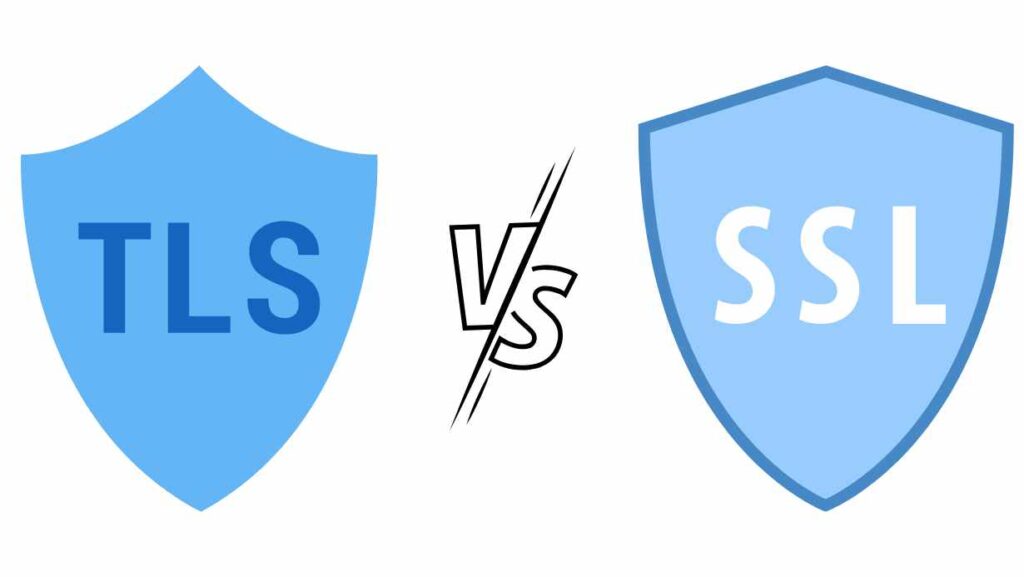SSL vs TLS
When it comes to website security, two important terms often come up: SSL (Secure Sockets Layer) and TLS (Transport Layer Security). Both SSL and TLS are cryptographic protocols that provide secure communication over a network. However, there are key differences between the two. In this blog post, we’ll explore SSL vs TLS, understand their differences, and help you determine which is better for your website security.
What Is SSL (Secure Sockets Layer)?
SSL, or Secure Sockets Layer, was the original cryptographic protocol developed by Netscape in the 1990s. It aimed to provide a secure channel for data transmission between a client and a server over the Internet. SSL offered encryption, integrity, and authentication, ensuring that sensitive information remains confidential and protected from unauthorized access.
SSL has evolved over time, with different versions released to address security flaws found in previous versions. However, certain vulnerabilities in SSL, such as those found in SSL 2.0 and SSL 3.0, led to the development of a more secure protocol: TLS.
What Is TLS (Transport Layer Security)?
TLS, or Transport Layer Security, is the successor to SSL. It was introduced to address vulnerabilities found in earlier versions of SSL and to enhance overall security. TLS operates in a similar manner to SSL, establishing a secure connection between clients and servers, and ensuring data integrity, privacy, and authentication.
Like SSL, TLS has different versions, each with its own security features and improvements. These versions include TLS 1.0, TLS 1.1, TLS 1.2, and the latest version, TLS 1.3. TLS 1.3 offers significant security enhancements, improved performance, and reduced latency.
The Key Differences Between SSL and TLS
While SSL and TLS are similar in purpose, there are significant differences between the two:
- Evolution: SSL has evolved over time with different versions, each addressing security flaws found in previous versions. TLS was introduced as a replacement for SSL and has its own versions that offer enhanced security features and improved performance.
- Algorithm Support: TLS supports a wider range of cryptographic algorithms and key exchange methods compared to SSL. This flexibility allows for stronger encryption and better negotiation of security protocols.
- Handshake Process: The SSL handshake process is slightly different from that of TLS. TLS uses a more secure handshake protocol, with improved key exchange methods, cipher suites, and hash functions.
- Compatibility: Modern browsers and systems have better support for TLS, while SSL support is gradually being phased out. While some older systems may still rely on SSL, transitioning to TLS is recommended for stronger security and compatibility with modern devices.
To better understand the differences between SSL and TLS, let’s compare their key features side by side:
| Feature | SSL | TLS |
|---|---|---|
| Security | Vulnerabilities in earlier versions | Enhanced security features |
| Algorithm Support | Limited algorithms and key exchange | Wide range of algorithms and methods |
| Handshake Process | Less secure handshake protocol | More secure handshake protocol |
| Compatibility | Phasing out of support | Widely supported by modern systems |
Which Version Is More Secure: SSL or TLS?

In terms of security, TLS (Transport Layer Security) is generally considered more secure than SSL (Secure Sockets Layer). The reason for this is that SSL has had vulnerabilities in its earlier versions, such as SSL 2.0 and SSL 3.0, which have been addressed in subsequent versions of TLS.
Stronger Security Features in TLS
TLS 1.2 and TLS 1.3, the latest versions of TLS, offer stronger security features, improved encryption algorithms, and enhanced resistance to attacks compared to SSL. Let’s look at some of the key factors that contribute to the improved security of TLS:
Cipher Suites
TLS supports a wider range of cipher suites, which are combinations of encryption algorithms, key exchange algorithms, and message authentication codes. These cipher suites offer stronger encryption and better security than those available in SSL.
Hash Functions
TLS uses more secure hash functions for data integrity checks. Hash functions play a crucial role in ensuring that the transmitted data remains unchanged and tamper-proof during transmission.
Key Exchange Methods
TLS incorporates more secure key exchange methods, such as Diffie-Hellman (DH) key exchange and Elliptic Curve Diffie-Hellman (ECDH) key exchange. These methods provide improved security in establishing the shared encryption keys between the client and server.
Deprecated SSL Versions
Several versions of SSL, including SSL 2.0 and SSL 3.0, have been deprecated due to their known vulnerabilities. This indicates that SSL is less secure and no longer recommended for secure communications.
It’s important to note that while TLS is more secure than SSL, the security of a website or system also depends on other factors, such as the implementation, configuration, and management of the protocol. Keeping the TLS implementation up to date, using strong encryption algorithms, and following security best practices are crucial for maintaining a secure website.
Should I Use SSL or TLS for My Website?
Considering the differences and security factors, it is recommended to use TLS for your website security. Here are a few reasons why:
- Stronger Security: TLS offers improved security over SSL, with better encryption algorithms and resistance to known vulnerabilities.
- Better Compatibility: TLS is widely supported by modern browsers and systems, ensuring compatibility across a broader range of devices.
- Future-Proofing: As SSL support diminishes, using TLS ensures your website remains compatible and secure in the long term.
If your website still relies on SSL, it is advisable to transition to TLS. This involves updating your server configurations, obtaining TLS certificates from trusted Certificate Authorities, and ensuring TLS compatibility on client devices.
Conclusion
In conclusion, while SSL paved the way for secure communication on the internet, TLS has emerged as the superior protocol in terms of security, compatibility, and future-proofing. Transitioning to TLS ensures your website remains secure and aligned with industry best practices.
By embracing TLS, you can provide a secure browsing experience for your users and protect their sensitive information from potential threats.
FAQs
Are SSL and TLS compatible with modern browsers?
While older versions of SSL may still be supported by some browsers, modern browsers are gradually phasing out support for SSL due to its security issues. TLS is widely supported by modern browsers and is the recommended choice for compatibility.
Can I switch from SSL to TLS for my website?
Yes, it is possible to switch from SSL to TLS for your website. This involves updating your server configurations, obtaining TLS certificates, and ensuring TLS compatibility on client devices. It is recommended to consult with your web hosting provider or IT team for a smooth transition.
How can I ensure the security of my TLS implementation?
To ensure the security of your TLS implementation, keep the protocol up to date, use strong encryption algorithms, and follow recommended security best practices. Regularly monitor and update your TLS configurations to mitigate any potential security risks.
Is it necessary to purchase a TLS certificate for my website?
Yes, obtaining a TLS certificate from a trusted Certificate Authority (CA) is essential for securing your website with TLS. A TLS certificate validates your website's authenticity and encrypts the data transmitted between your server and clients, ensuring secure communication.
See Also: The Firewall: Your Network’s First Line of Defense










